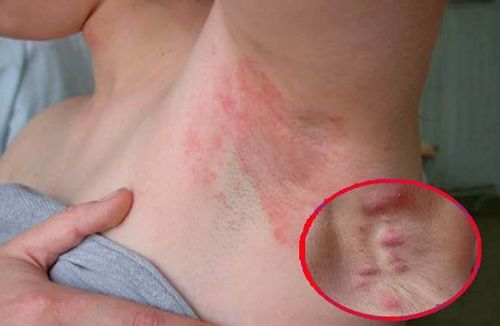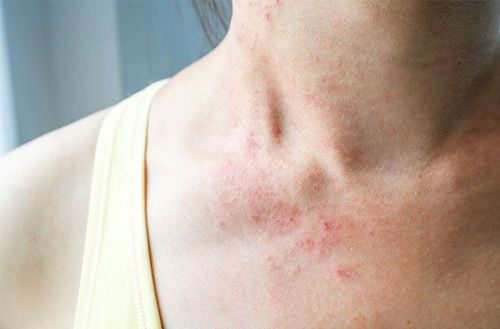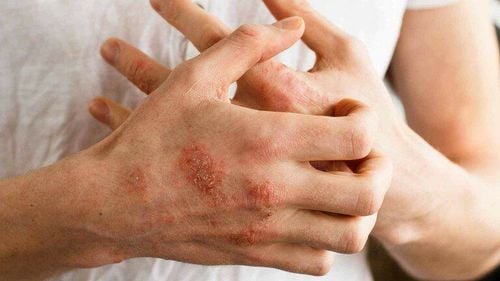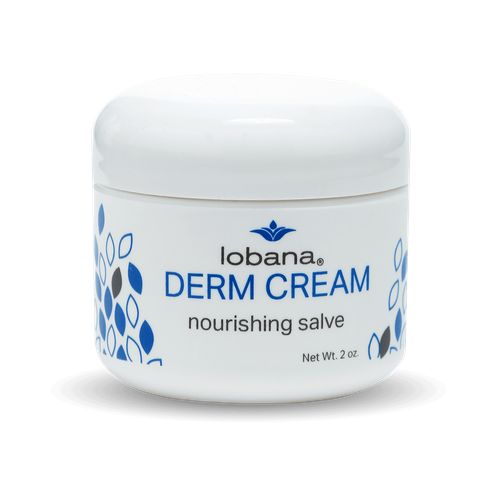This is an automatically translated article.
If sweaters make you itchy or if you wear polyester pants you can get a rash. This is an allergic reaction to fabrics. Your skin is reacting to the fibers in your clothes or to the dyes, plastics, and other chemicals used to treat the clothes you wear.
1. What causes allergies to fabrics?
Since clothing is in close contact with the skin all day, it's not surprising that shirts, pants, and panties can cause skin problems. Any fiber can cause a rash, but you're more likely to be allergic to fabrics made of synthetic materials like polyester, rayon, nylon, spandex, or rubber. They are not as breathable as natural fibers, and so they make you sweat more.
Often the source of fabric sensitization is dyes or other chemicals in the clothing. Formaldehyde resins used to make clothes do not wrinkle or resist stains that will cause problems. The same goes for dyes, glues, and chemicals used for tanning or making leather. If you're allergic to nickel, you may have a red, itchy skin reaction when the blue jeans button touches your skin. This is also known by its own name nickel dermatitis. Nickel jewelry can also cause an allergic reaction.
The combination of tight fabric and body sweat also causes skin irritation when rubbed against the body. Doctors call this irritant dermatitis, which is less common. It may look like fabric dermatitis, but the causes are different.
2. What are the symptoms of sensitive skin to clothes?
Look for areas of red, scaly or itchy skin. Sometimes they appear within hours of you getting dressed, or it can take days or weeks to appear. Some people even wear the same item for years before the rash develops.
Symptoms usually start in the folds of your skin or other areas that come in contact with your clothing and what's in there include:
The creases behind the knees Armpits Hangings Anywhere pants your shirt is tight

Vị trí nếp gấp như nách thường xuyên tiếp xúc với quần áo có thể gặp tình trạng ngứa
3. Who is at risk for fabric allergies?
Women are more likely to get this disease, because they often wear tight clothes. The same goes for obese people when they are overheated and sweaty. Besides, the workplace is also very important. People whose jobs are in hot and humid places, like bakeries, are more likely to develop dermatitis. If you wear latex gloves at work, your hands may be irritated (possibly irritant dermatitis) or you may be allergic to the rubber itself. It is allergic contact dermatitis.
4. How to prevent skin sensitivity to fabrics
The first thing to do is to stop wearing something that makes you uncomfortable. Your skin will most likely clear up within a few weeks. Or you can also try the following:
Wear natural fibers and loose fitting clothing to reduce sweating. Choose light-colored clothing with a low dye content. Avoid items with labels that claim to be “washed separately”. They are more likely to be made from more dyes. Do not wear clothes that are labeled wash and wear, are pressed in place, are not ironed, or are stain resistant. They are likely to contain chemicals that irritate your skin.
5. How to know the cause of the skin rash?
It is not easy to determine if your skin problem is irritation or allergies, some clothes are made from a mixture of fibers, and can also be treated with a number of dyes and chemicals. But in general, the rashes and redness look similar and are difficult for most people to tell apart. The location of the rash can be a clue to what's causing it. If you lie on the lower back, you may be allergic to the rubber in your underwear. Your doctor can now use a special skin patch to check for these suspected allergy triggers and figure out which ones "disturbed" your skin.

Từ vị trí phát ban có thể là manh mối giúp tìm nguyên nhân gây phát ban trên da
6. When should I see a doctor?
If your skin doesn't clear up in a few weeks, it's time to talk to a dermatologist. Also, check with your doctor if the rash covers a large area, causes severe pain, itching, or seems to be spreading instead of going away. Your doctor can make sure you don't have an infection on your skin.
7. How to treat allergies to fabrics?
If you know what clothing is causing the rash and you stop wearing it, the rash usually goes away on its own without the use of medication.
But if your symptoms don't improve and tend to get worse, your doctor may treat you with antihistamines, moisturizers, or steroids to help ease the rash. Or try an oatmeal bath to soothe skin. More severe cases of dermatitis can be treated with oral steroids such as prednisone and should be under the guidance of a doctor.
Best when the skin is sensitive to clothes, you need to pay attention to choosing clothes made of cotton fabric, light, easy to wear and limit tight to minimize the feeling of irritation to the skin. In case the skin has a lot of redness, no signs of improvement, you should see your doctor, pharmacist for advice and appropriate indications.
Please dial HOTLINE for more information or register for an appointment HERE. Download MyVinmec app to make appointments faster and to manage your bookings easily.
Reference source: webmd.com












